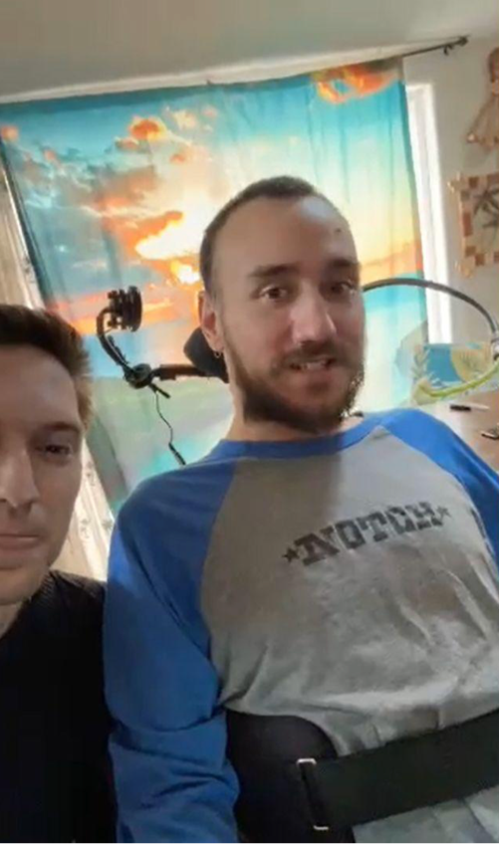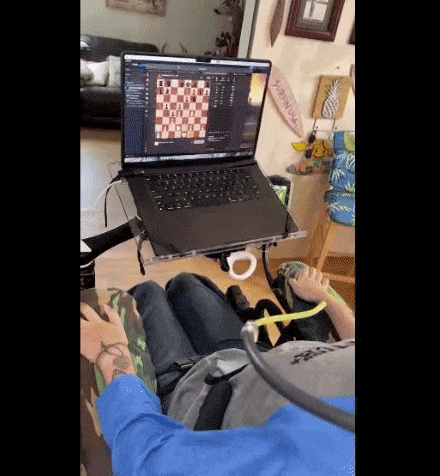
What a remarkable week Elon Musk and his teams have had.
It’s hard to imagine that just one executive can be leading the charge on so many remarkable accomplishments.
In just the last 7 days:
On January 29th, Elon Musk sent out a brief message that “the first human received an implant from @Neuralink yesterday and is recovering well. Initial results show promising neuron spike detection.”
It was definitely a positive message, but it left us wanting.
After all, it was the very first implantation of Neuralink’s brain-computer interface into a human brain.
I had so many questions, but expected very little information. It’s rare to ever learn who exactly the patient is, let alone how the medical intervention is working.
Which is why yesterday was such an incredible surprise.
Neuralink held a 9-minute livestream with its first patient for its brain computer interface (BCI).

Meet Noland Arbaugh, a 29-year-old quadriplegic who has just made history.
He is the first patient of Neuralink — referenced by Musk on January 29th.
In what Noland describes as a “freak diving accident,” he dislocated his C4-C5 vertebrae and lost all movement and sensation below his shoulders.
To Noland’s left is an engineer from Neuralink that has been working with Noland to help train him on the use of his newfound “powers,” imparted to him through his Neuralink — “powers” that now give Noland special abilities. Or, as Noland likes to say, “Now I’m telekinetic.”
For those that are curious, you can watch the 9-minute video right here. It’s breathtaking and incredibly inspiring.
In the short video segment below, if we look closely, we can see a round cursor moving around the screen.
While the cursor is moving, Noland says, “Y’all can see the cursor moving around the screen, that’s all me. It’s all brain power.”
He was also able to pause a song playing in the background on his laptop.

Noland is now able to play chess online unassisted.
And he is equally excited to now be able to play Civilization 6 — a very complex, time-consuming game — for hours on end without needing a family member to help him.
After receiving the implant back in January, with the help of the Neuralink team, Noland has been training on how to use the Neuralink system.
Neuralink has already created software-based training systems that help calibrate the patient’s brain waves with the Neuralink system… and thus the desired movement of a cursor.
When talking about the experience of using Neuralink, Noland says, “It was like using The Force on the cursor.” Very cool.

It’s hard to argue against technology like this.
Noland’s ability to control the cursor movement wirelessly — just with his thoughts — is remarkable.
And we must remember, this is just the first version of the Neuralink technology.
Just imagine where the tech will be in a couple more years.
When talking about the surgery, Noland said it was “nothing to be afraid of,” and that the “surgery was super easy.”
He went further to say that “it’s not perfect yet”, but that “it’s already changed my life.”
“I think they [the Neuralink team] are going to change the world.”
I would agree.
I couldn’t help but be reminded of all the critics, naysayers, neuroscientists, and other “experts” who dismissed or criticized Elon Musk and his team over the last few years.
A professor from the University of Sussex said, “Recording from neurons in live and behaving animals is a standard procedure in Neuroscience and is decades old.” The comments were to suggest that, clearly, Neuralink wasn’t doing anything special, and in fact they were decades behind the rest of the field. Sure…
Another professor from Newcastle University said that Musk demonstrated “mediocre neuroscience” with Neuralink.
Musk replied to some of the criticism at the time…
“It is unfortunately common for many in academia to overweight the value of ideas and underweight bringing them to fruition,” said Musk.
We’ve learned that the “experts” tend to pontificate and criticize, and are often wrong, while the engineers, entrepreneurs, and innovators put their heads down and get stuff done.
They tackle the hard problems — the ones that are meaningful to society — like enabling the human race to become a multi-planetary species, like protecting free speech, like making automobiles autonomous to ultimately eliminate the millions of meaningless deaths every year caused by human driving error, or developing a brain-computer interface that can empower quadriplegics to communicate with computers and have some semblance of autonomy.
Let’s ignore the haters, the critics, and the pontificating “experts,” and celebrate and reward the doers who are a force for positive progress.
And we’d think that it might be obvious by now, but in the event that it isn’t…
Never bet against Musk.
New reader? Welcome to the Outer Limits with Jeff Brown. We encourage you to visit our FAQ. You may also catch up on past issues in the Outer Limits archive.
If you have any questions, comments, or feedback, we always welcome them. We read every email and address the most common threads in the Friday AMA. Please contact us.